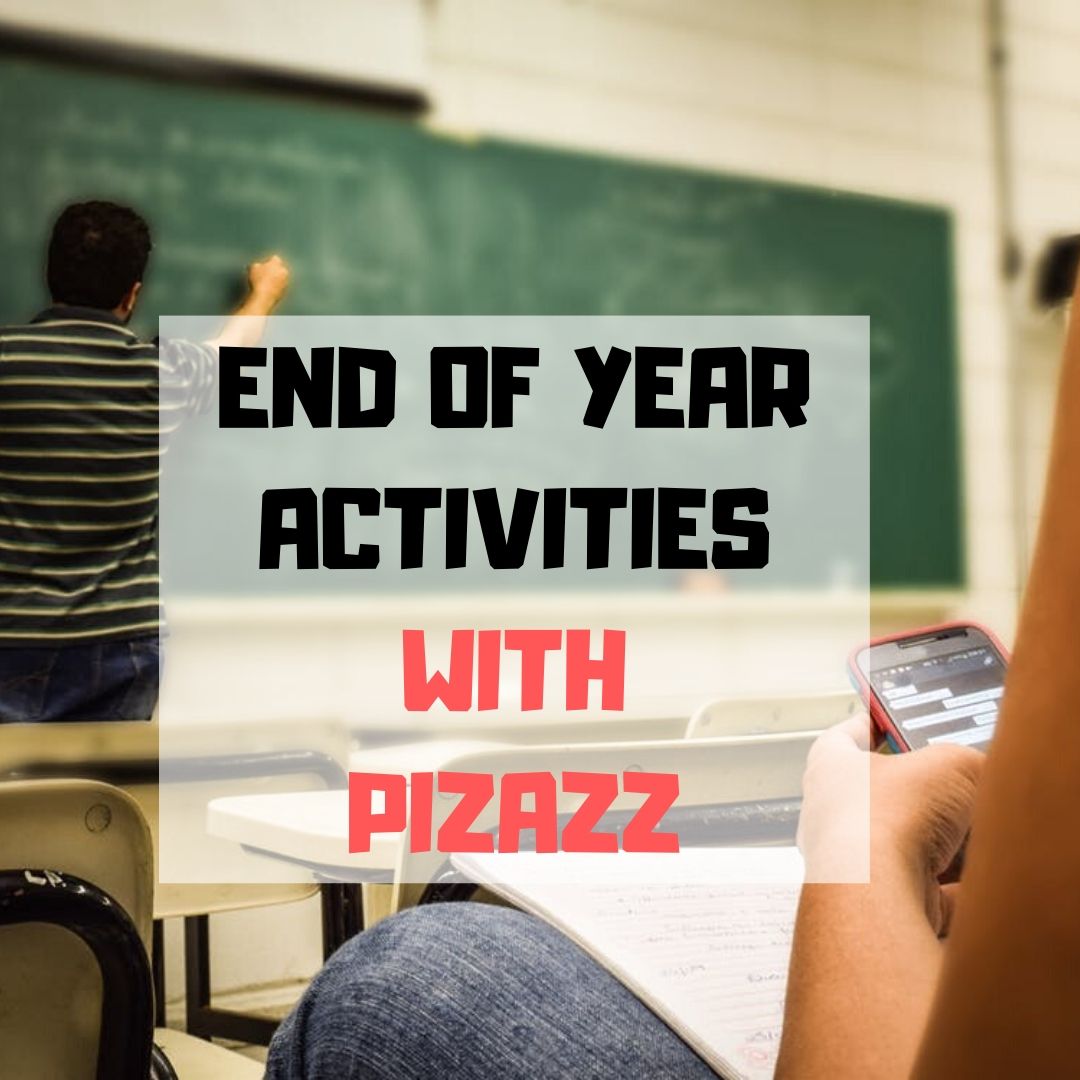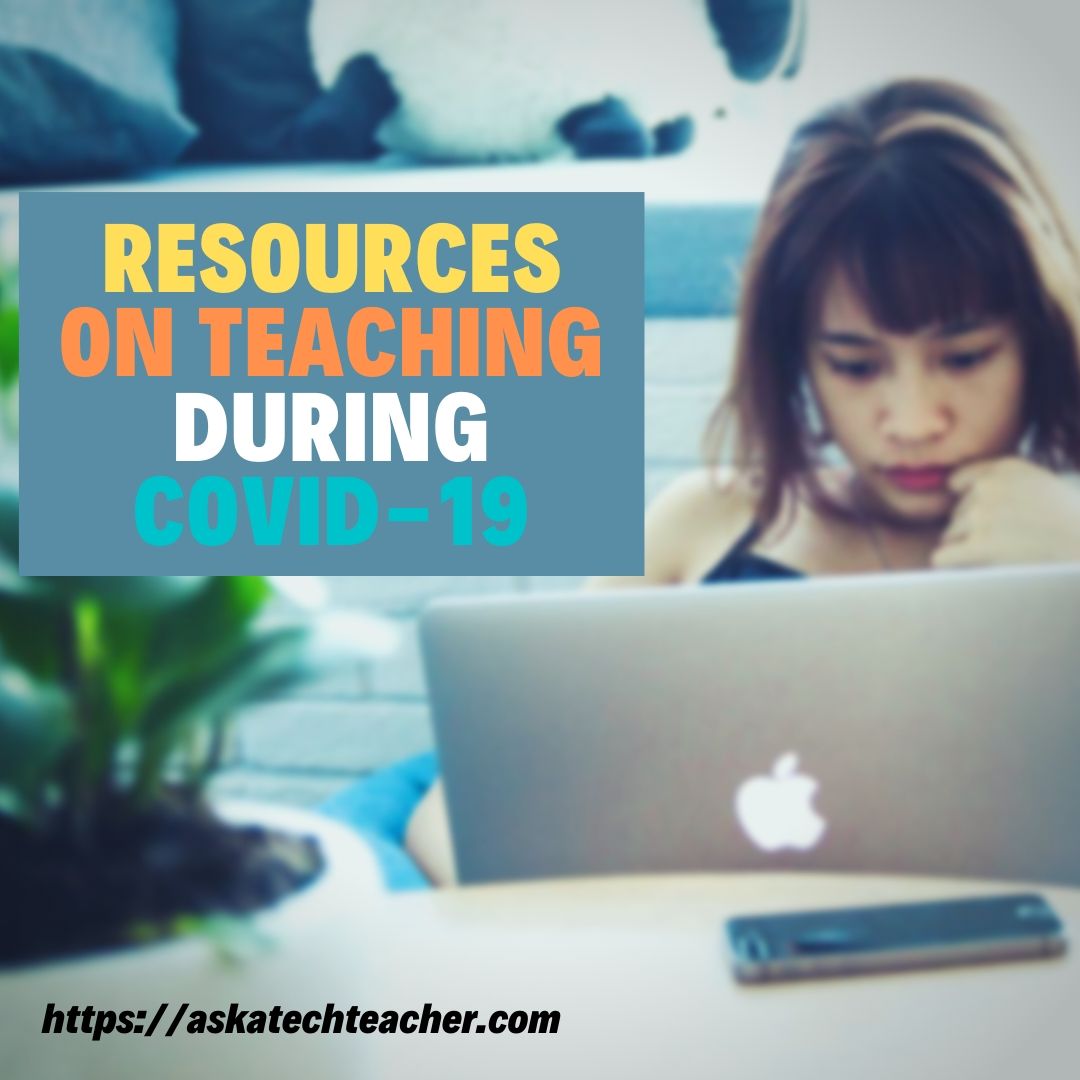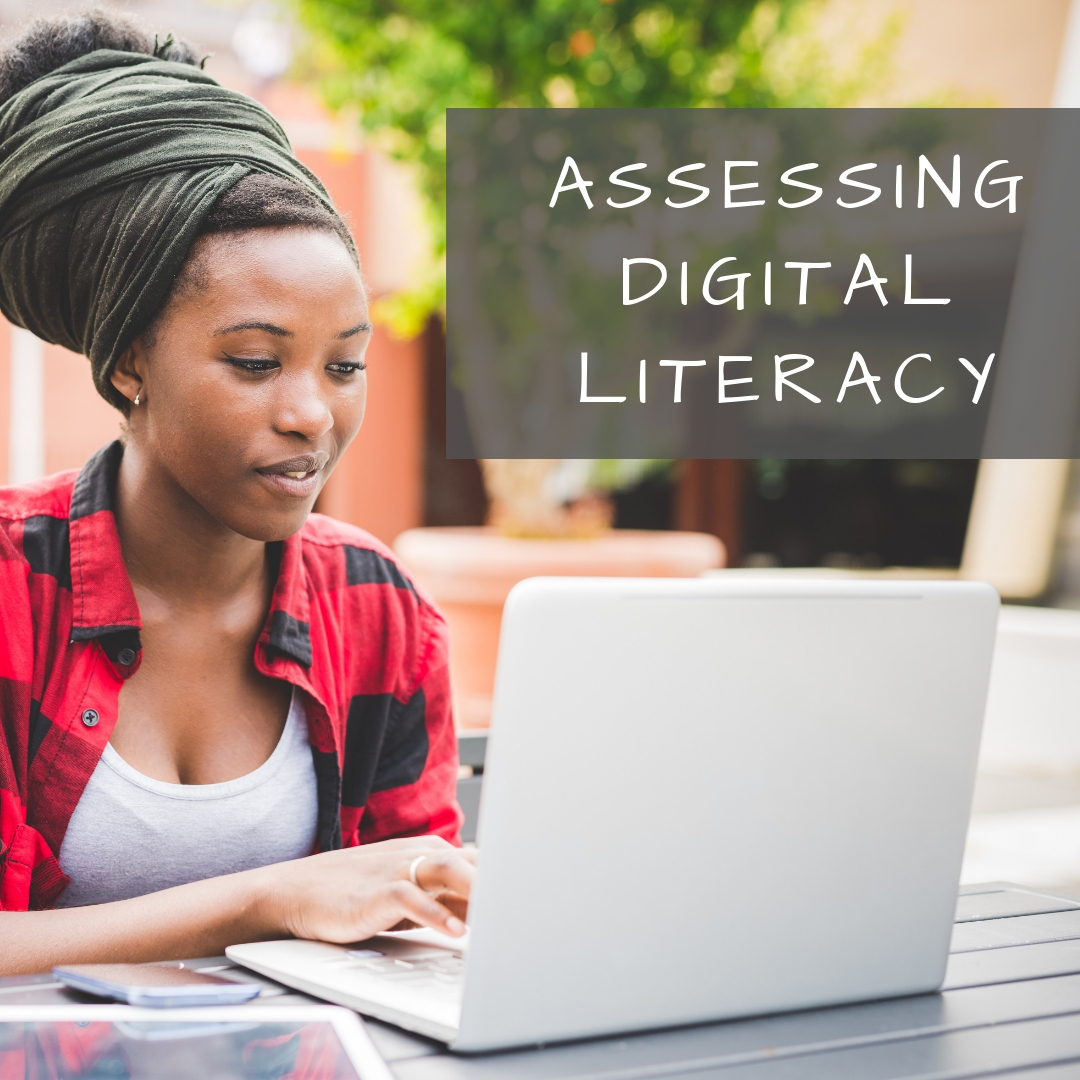End of Year Activities
From our files, here are great articles about activities popular at the end of the school year:
5 Favorite Activities to End the School Year
The end of the school year is a time when both students and teachers alike are distracted by thoughts of vacation, sleeping in, and no deadlines. For many, this means, during the last few weeks of school, learning limps to a grinding halt but increasingly, teachers use this time productively to introduce curricular- and standards-aligned activities that “color outside the lines” — step away from the textbook to blend learning with dynamic activities that remind students why they want to be life-long learners. Many of these, educators would love to teach but “just don’t have time for“, even though they align well with broad goals of preparing students for college and career.
If you’re looking for meaningful lessons to wrap up your school year, here are my top picks:
-
-
- Digital Passport
- Cool book reports
- Practice keyboarding
- Dig into cyberbullying
- Applied Digital Skills
-
10 Ways to Wrap Up the School Year
It’s the end of school. Everyone’s tired, including you. What you want for these last few weeks are activities that keep the learning going but in a different way. You want to shake things up so students are excited and motivated and feel interested again.
Change your approach. Provide some games, simulations, student presentations–whatever you don’t normally do in your classroom. If you’re doing PowerPoints, use the last few weeks for presentations. Make them special–invite teachers. Invite parents. If you never serve food in your lab, do it for these presentations.
Here are my favorite year-end Change-up activities:
-
-
- 6 Webtools in 6 weeks
- Class Debate
- Digital Citizenship review
- Games and Simulations
- Genius Hour
- Group Discussion
- Khan Academy
- Presentation Boards
- Service Learning
- Write an Ebook
-
How to Use Tech to Help Graduating Students Find Jobs
Share this:
- Click to share on Facebook (Opens in new window) Facebook
- Click to share on X (Opens in new window) X
- Click to share on LinkedIn (Opens in new window) LinkedIn
- Click to share on Pinterest (Opens in new window) Pinterest
- Click to share on Telegram (Opens in new window) Telegram
- Click to email a link to a friend (Opens in new window) Email
- More
3 Apps That Energize Learning
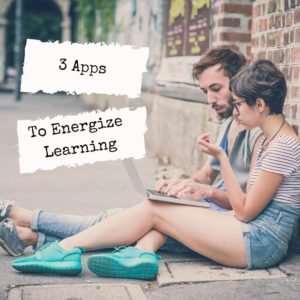 Let’s face it. Teachers juggle an exhausting schedule of parent conferences, administrative tasks, and specialized student needs. They take work home evenings and weekends and often are forced to choose between family and job when it comes to allocating a finite quantity of time over what surely seems to be infinite needs.
Let’s face it. Teachers juggle an exhausting schedule of parent conferences, administrative tasks, and specialized student needs. They take work home evenings and weekends and often are forced to choose between family and job when it comes to allocating a finite quantity of time over what surely seems to be infinite needs.
The teachers I know want to be more organized, work more efficiently, use available tools to complete tasks faster, and prioritize needs. Knowing this, I look for tools to energize my teaching, do stuff like:
- save time
- accomplish common tasks more quickly
- make access from digital devices easy and intuitive
- are simple to use so even when my mind is somewhere else (like on the child across the room or the admin peeking in my door), the tool performs flawlessly
Here are three apps I love that meet these qualifications:
Flip
Flip is a freemium discussion app where teachers (or even students) pose a discussion topic (via video) and students respond with a short video. The post may include a recording, an attachment, decorations, or any number of other tools to share their knowledge. Responses show up in a grid format that’s easy to view and fun to read for students and teachers.
Educational applications
This app is a wonderful method of differentiating for varied student needs. Here are just a few ways to use it in your class:
- ask questions about reading material or the lesson plan as a formative assessment to measure student understanding of the topic.
- let students pose questions about material that classmates can answer–a backchannel approach to learning
- have students share a quick video about themselves at the start of a new school year
- extend a classroom discussion so all students can offer their ideas, even the shy members
- brainstorm on a topic to collect lots of ideas before drawing a conclusion
IFTTT
Share this:
- Click to share on Facebook (Opens in new window) Facebook
- Click to share on X (Opens in new window) X
- Click to share on LinkedIn (Opens in new window) LinkedIn
- Click to share on Pinterest (Opens in new window) Pinterest
- Click to share on Telegram (Opens in new window) Telegram
- Click to email a link to a friend (Opens in new window) Email
- More
169 Tech Tip #73 7 tips for Netiquette
 In these 169 tech-centric situations, you get an overview of pedagogy—the tech topics most important to your teaching—as well as practical strategies to address most classroom tech situations, how to scaffold these to learning, and where they provide the subtext to daily tech-infused education.
In these 169 tech-centric situations, you get an overview of pedagogy—the tech topics most important to your teaching—as well as practical strategies to address most classroom tech situations, how to scaffold these to learning, and where they provide the subtext to daily tech-infused education.
Today’s tip: 7 Netiquette Tips
Category: Internet
Sub-category: MS Office, Keyboarding
Q: What are the most important netiquette tips for students when using the Internet?
A: Here’s a poster:
Sign up for a new tip each week or buy the entire 169 Real-world Ways to Put Tech into Your Classroom.
#digcit
Share this:
- Click to share on Facebook (Opens in new window) Facebook
- Click to share on X (Opens in new window) X
- Click to share on LinkedIn (Opens in new window) LinkedIn
- Click to share on Pinterest (Opens in new window) Pinterest
- Click to share on Telegram (Opens in new window) Telegram
- Click to email a link to a friend (Opens in new window) Email
- More
10 Tips for Teaching Remotely
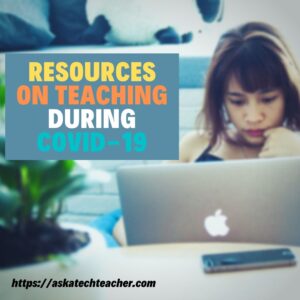 I’ve been working from home for years but most people haven’t. I posted this article about a year ago but have updated it for the challenges we now face with #covid19
I’ve been working from home for years but most people haven’t. I posted this article about a year ago but have updated it for the challenges we now face with #covid19
Truth is, life often interferes with work. Vacations, conferences, PD–all these take us away from our primary job functions and the environment where we are most comfortable delivering our best work. But you do need the right equipment and setup to make that happen. Here’s what I currently use to teach from home or can easily arrange:
-
- Have necessary apps on iPads and smartphones. This includes your LMS, virtual meeting tool, cloud accounts, email, scan, social media, and sharing.
- Have a digital notetaking program–Evernote, OneNote, Notability, or Google Keep for example.
- Wean yourself from printing hard copies. It’s easier to do than it sounds. My printer broke–well, it wouldn’t print more than one page without jamming. That made it hard to print a lot of documents. Instead, I loaded the document onto my iPad (or laptop) and interacted with it there. PDFS: I can annotate with the Edge browser or a dedicated app. Google and Microsoft docs: Easy to work with those right from the platform. Once I’ve marked them up as needed, I can email the file, take a screenshot and share it, or do nothing (in the case of Google docs). No printing required. I am now completely used to that–would never go back to the paper-wasting approach.
- If you go somewhere else to work (I was going to say a coffee shop but that’s out of bounds this month), don’t use a public WiFi. Use a hot spot connected to your phone. Public WiFi like Starbucks are notoriously insecure.
- Be brave about solving problems associated with online work. Don’t let setbacks and roadblocks stop you. Be accountable to yourself or you won’t get stuff done. I have to say, so many of my fellow teachers are risk-takers. When this remote teaching problem was dumped in their lap, their attitudes were positive, can-do, and try to stop me!
- Have a virtual meeting program like MS Teams, Zoom (if your school allows it), Google Hangouts, Google Meet, Webroom.net, Big Blue Button, or another. These are for larger groups (like a book club meeting). Small group video calls work nicely with programs like Facetime, Skype, or Google Hangouts.
- Student collaborative groups can be addressed with a mix of Facetime on phones and the Google Doc on the digital device. Or another way–I’d love to hear how your students address this.
- Have backup batteries for your phone, laptop, and iPad. You’re using them a lot more than usual. They’ll run through your power more quickly than you’re accustomed to. And, videos, personal hotspots and Google Maps burn through power. What should last nine hours turns out to be two.
- Have redundancy where something is important. For example, my external battery charger died and my iPad ran out of juice. Since then, I purchased a redundant backup power supply.
Share this:
- Click to share on Facebook (Opens in new window) Facebook
- Click to share on X (Opens in new window) X
- Click to share on LinkedIn (Opens in new window) LinkedIn
- Click to share on Pinterest (Opens in new window) Pinterest
- Click to share on Telegram (Opens in new window) Telegram
- Click to email a link to a friend (Opens in new window) Email
- More
Why Earth Day May be the Most Important Event at School
 Every year, the world celebrates Earth Day on April 22nd, a day the United Nations recognizes as International Mother Earth Day. It is a day to remind ourselves of the importance of clean air, fresh water, and unlittered land. It’s when we can all participate in making that happen rather than accepting the trash-filled oceans, the smoggy skies, and the debris-laden land that is becoming the norm in our lives.
Every year, the world celebrates Earth Day on April 22nd, a day the United Nations recognizes as International Mother Earth Day. It is a day to remind ourselves of the importance of clean air, fresh water, and unlittered land. It’s when we can all participate in making that happen rather than accepting the trash-filled oceans, the smoggy skies, and the debris-laden land that is becoming the norm in our lives.
Despite the questionable health of our world, we have made progress. Back in 1970, when Earth Day was first celebrated, trucks spewed black smoke as they drove down the highways, toxic waste was dumped into oceans with no repercussions, and the general opinion was that the Earth took care of itself. That changed when U.S. Senator Gaylord Nelson, Earth Day’s founder, witnessed the ravages of the 1969 massive oil spill in Santa Barbara California and decided it was time for someone to do something. When he looked around for that “someone”, it turned out to be himself. He started with a “national teach-in on the environment” with a simple goal: Encourage people to recognize the importance of protecting the Earth:
“It was on that day [Earth Day] that Americans made it clear they understood and were deeply concerned over the deterioration of our environment and the mindless dissipation of our resources.”
How effective is Earth Day
In the 49 years since the inception of Earth Day, there have been more than 48 major environmental “wins”. Here are some of those:
- The U.S. Clean Air Act was passed, a comprehensive federal law that regulates air emissions.
- The U.S. Clean Water Act was passed to regulate the discharge of pollutants into U.S. waters.
- The U.S. Environmental Protection Agency (EPA) was passed.
- The U.S. Endangered Species Act was passed to protect animal species that are disappearing.
- The Acid Rain (what happens when normal rain becomes loaded with offensive chemicals and scalds the skin) Program obtained emission reductions of sulfur dioxide and nitrogen oxides.
- The importance of the ozone layer to the health of the Earth is better understood.
- The consequences of too much plastic in the Earth’s oceans is coming home to roost.
Share this:
- Click to share on Facebook (Opens in new window) Facebook
- Click to share on X (Opens in new window) X
- Click to share on LinkedIn (Opens in new window) LinkedIn
- Click to share on Pinterest (Opens in new window) Pinterest
- Click to share on Telegram (Opens in new window) Telegram
- Click to email a link to a friend (Opens in new window) Email
- More
Last Chance: Differentiated Instruction Online Class (MTI 563)
MTI 563: The Differentiated Teacher
MTI 563 starts in one week–Monday, April 27, 2020! Last chance to sign up. Click this link; search for MTI 563 and click for more information and to sign up.
What is it
Differentiation in the classroom means meeting students where they are most capable of learning. It is not an extra layer of work, rather a habit of mind for both teacher and student. Learn granular approaches to infusing differentiation into all of your lesson plans, whether you’re a Common Core school or not, with this hands-on, interactive class. Ideas include visual, audio, video, mindmaps, infographics, graphic organizers, charts and tables, screenshots, screencasts, images, games and simulations, webtools, and hybrid assessments.
Assessment is based on involvement, interaction with classmates, and completion of projects so be prepared to be fully-involved and an eager risk-taker. Price includes course registration, college credit, and all necessary materials. To enroll, click the link above, search for MTI 563 and sign up. Email askatechteacher at gmail dot com for questions.
What You Get
-
- 5 Activities (topics)
- tech ed videos, lesson plans, articles
- 5 weeks
- 4 virtual meetings
- Unlimited questions/coaching during virtual face-to-face meetings and other pre-arranged times. We stay until everyone leaves.
- 3 college credits
Course Objectives
At the completion of this course, you will be able to:
-
- Use technology to differentiate for student learning styles
- Understand how differentiating content and presentation engages a great proportion of learners
- Ensure that the outcome of student learning demonstrates understanding
- Vary assignments to address all learners’ needs
- Create an inclusive learning environment in the classroom
Who Needs This
This course is designed for classroom teachers, tech teachers, integration specialists, media specialists, LMS, administrators, principals, homeschoolers, teachers of teachers, and pre-service professionals.
What Do You Need to Participate
-
- Internet connection
- Accounts for online tools like a blog, Twitter, various web-based tools
- Google account (can be your school account or your personal one)
- Ready and eager to commit 5-10 hours per week for 5 weeks to learning tech
- Commitment to review materials prior to the virtual meeting (so you are prepared to address questions with classmates)
- Risk-taker attitude, inquiry-driven mentality, passion to optimize learning and differentiate instruction
NOT Included:
-
- Standard software assumed part of a typical ed tech set-up
- Tech networking advice
- Assistance setting up hardware, networks, infrastructure, servers, internet, headphones, microphones, phone connections, loading software
Screenshots
[gallery type="slideshow" ids="59175,59181,59177,59178,59179,59180,59176"]Share this:
- Click to share on Facebook (Opens in new window) Facebook
- Click to share on X (Opens in new window) X
- Click to share on LinkedIn (Opens in new window) LinkedIn
- Click to share on Pinterest (Opens in new window) Pinterest
- Click to share on Telegram (Opens in new window) Telegram
- Click to email a link to a friend (Opens in new window) Email
- More
Teaching During COVID-19
Articles on #CoronaVirus you won’t want to miss:
Resources You Need During #COVID19
Teaching Online During #COVID19
Teaching Online During #COVID19–More from my Inbox
#CoronaVirus–This Week’s Inbox
Teaching During #CoronaVirus–An Old Strategy That’s Perfect
13 Teaching Strategies to Shake up Your Remote Teaching
8 Ways Parents and Teachers Support Remote Teaching (coming May 28)
Share this:
- Click to share on Facebook (Opens in new window) Facebook
- Click to share on X (Opens in new window) X
- Click to share on LinkedIn (Opens in new window) LinkedIn
- Click to share on Pinterest (Opens in new window) Pinterest
- Click to share on Telegram (Opens in new window) Telegram
- Click to email a link to a friend (Opens in new window) Email
- More
Teaching During #CoronaVirus–An Old Strategy That’s Perfect
 A problem with online teaching is that students have to sit through a long lecture-sort of presentation–if you’re trying to replicate your classroom teaching. Some good advice I see over and over regarding teaching online is DON’T try to replicate your physical classroom. Instead, teach using online’s strengths. A good way to do that is with a flipped classroom. Chris Landry, an eighth-grade science teacher at Memorial Middle School, said he’s been able to continue teaching students amid the closures through videos and has even provided them with fun activities to do at home. What made it easier? Flipped Classrooms:
A problem with online teaching is that students have to sit through a long lecture-sort of presentation–if you’re trying to replicate your classroom teaching. Some good advice I see over and over regarding teaching online is DON’T try to replicate your physical classroom. Instead, teach using online’s strengths. A good way to do that is with a flipped classroom. Chris Landry, an eighth-grade science teacher at Memorial Middle School, said he’s been able to continue teaching students amid the closures through videos and has even provided them with fun activities to do at home. What made it easier? Flipped Classrooms:
“…adjusting to the new way of teaching was easier than expected because he was using a “flipped classroom” while schools were in session.
For a thorough overview of flipped classrooms, take a look at this infographic from Cool Infographics:
Share this:
- Click to share on Facebook (Opens in new window) Facebook
- Click to share on X (Opens in new window) X
- Click to share on LinkedIn (Opens in new window) LinkedIn
- Click to share on Pinterest (Opens in new window) Pinterest
- Click to share on Telegram (Opens in new window) Telegram
- Click to email a link to a friend (Opens in new window) Email
- More
How to Assess Digital Literacy
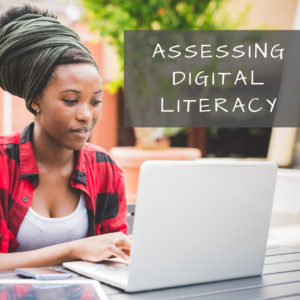 On my blog, Ask a Tech Teacher, I run a column called Dear Otto where I answer teacher questions about how to integrate technology into their classes. Of late, the most common question is, “How to I assess student digital literacy?” with a close cousin, “I am the tech integration specialist. How do I assess faculty digital literacy so I can teach them what they don’t know?”
On my blog, Ask a Tech Teacher, I run a column called Dear Otto where I answer teacher questions about how to integrate technology into their classes. Of late, the most common question is, “How to I assess student digital literacy?” with a close cousin, “I am the tech integration specialist. How do I assess faculty digital literacy so I can teach them what they don’t know?”
Happily, both can be accomplished the same way. But before I tell you how, let’s step back and talk about the meaning of “digital literacy”.
What is digital literacy?
The definition of digital literacy is pretty much what you’d expect:
“the ability to use information and communication technologies to find, evaluate, create, and communicate information, requiring both cognitive and technical skills.” –from the American Library Association
In the past, I discussed the eight skills required for students to be considered digitally literate. Today, I want to focus on the need to assess digital literacy and what tools are available to do this.
Why assess it?
Especially today–in a COVID-19 world–this is a good question. Here are the five most common reasons schools feel the need to assess student and faculty digital literacy:
Share this:
- Click to share on Facebook (Opens in new window) Facebook
- Click to share on X (Opens in new window) X
- Click to share on LinkedIn (Opens in new window) LinkedIn
- Click to share on Pinterest (Opens in new window) Pinterest
- Click to share on Telegram (Opens in new window) Telegram
- Click to email a link to a friend (Opens in new window) Email
- More
Stem Education in 2020
A growing focus of schools is STEM. Ask a Tech Teacher contributor, Brianna, has some general observations about STEM education in 2020:
Stem Education in 2020
About two decades ago, the sciences were not so popular among younger generations. People keen on mathematics, physics, or IT were awe-inspiring and seemed to have supernatural abilities. But, the importance of sciences and technologies has grown; that’s why professionals in certain fields have become headhunters’ “targets.” The world’s workforce lacked a lot of science specialists, that is why STEM education became more popular.
So, what is STEM education? STEM is an acronym that stands for science, technology, engineering, and mathematics. These subjects are being taught cross-disciplinary and in a complex which refers to real situations. This approach fosters the motivation of students which tend to make use of essay help service and tutors to have work done. You might think that there can be nothing new about STEM education in K-12 and higher education. Still, there are several facts you may want to know about.
The Role of Technology
The essential component in 2020 is a T-part of STEM – Technology. It is not only an object of education but a necessary and irreplaceable means of teaching STEM as well. For several years now, we observe a rapid growth of online and remote teaching, learning, and even practicing. Education in various disciplines has undergone significant change with the introduction of VR and AR into the classrooms. Now it is possible to create virtual reality and virtual laboratories for students to practice in. And this is only a small part of the technologies’ influence on modern life and education.
Grants and New Opportunities
Currently, numerous STEM courses and grants are launching in many universities and organizations. Moreover, famous corporations and brands are funding them, making it possible for students with limited financial possibilities to get quality education free of charge. Such examples are Ford Motor, Toyota Foundation, and Toshiba. They offer grants not only to students of higher education institutions but at a school level too. The NEA Foundation also promotes grants and projects to underserved communities that do not have access to a quality education process and resources.
Share this:
- Click to share on Facebook (Opens in new window) Facebook
- Click to share on X (Opens in new window) X
- Click to share on LinkedIn (Opens in new window) LinkedIn
- Click to share on Pinterest (Opens in new window) Pinterest
- Click to share on Telegram (Opens in new window) Telegram
- Click to email a link to a friend (Opens in new window) Email
- More

